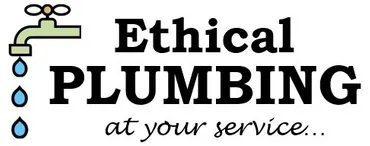Trenchless vs. Traditional Sewer Repair: Which Is More Cost-Effective?
When it comes to sewer repair, cost-effectiveness is a key concern for homeowners and property managers. Two primary methods are commonly used for sewer repair: trenchless and traditional. Both have their advantages and drawbacks, but the big question is, which one is more cost-effective? In this article, we’ll explore both trenchless and traditional sewer repair methods, break down the cost considerations for each, and help you make an informed decision based on your specific needs.
Understanding Trenchless Sewer Repair
Trenchless sewer repair is a modern approach to fixing sewer line issues without the need for extensive excavation. Here’s a closer look:
1. Pipe Lining
One trenchless method involves creating a new pipe within the existing damaged one. This method, known as pipe lining, is highly efficient for repairing minor to moderate sewer damage. It’s less disruptive and can be completed quickly, making it an appealing option for many.
2. Pipe Bursting
Another trenchless technique is pipe bursting, which replaces the old pipe by breaking it apart and pulling a new one in its place. While it can be more expensive than pipe lining, it’s suitable for more extensive damage scenarios, offering a long-lasting solution.
Trenchless repair methods offer significant benefits, including reduced disruption and faster completion times compared to traditional methods. Now, let’s delve into the cost considerations for trenchless sewer repair.
Cost Considerations for Trenchless Sewer Repair
- Extent of Damage
The extent of sewer damage plays a crucial role in determining repair costs for trenchless methods. Minor issues, such as small cracks or leaks, are generally less expensive to repair using trenchless techniques. For example, a simple pipe lining repair for minor damage might cost between $1,000 to $2,000.
- Material and Pipe Size
The type and size of your sewer pipe can also influence trenchless repair costs. Different pipe materials, such as PVC, clay, or cast iron, come with varying cost implications. Additionally, larger-diameter pipes require more materials, contributing to higher costs.
- Accessibility and Location
The location and accessibility of your sewer line matter. Sewer lines located in tight spaces, under structures, or within densely populated areas can be more challenging to repair, potentially increasing trenchless repair costs. Accessibility issues may require additional equipment or more labor-intensive work.
- Soil Conditions
The type and condition of the soil where your sewer line is located can impact repair costs. Working in rocky or unstable soil can be more time-consuming and may necessitate specialized equipment. Contractors often need to take extra precautions in challenging soil conditions.
Exploring Traditional Sewer Repair
Traditional sewer repair methods involve excavation, removal of the damaged pipe, and replacement with a new one. While effective, this approach has its own set of considerations:
1. Excavation and Labor
Excavation for traditional sewer repair is labor-intensive and time-consuming. Costs can vary based on factors like soil type and depth. Extensive excavation work in challenging conditions can significantly increase the overall expense.
2. Material and Replacement
Traditional repair involves the cost of materials and the replacement of the entire sewer line. Different materials may have different price points, and replacing the entire line can be costly.
3. Restoration Costs
After traditional repair, there are often additional expenses related to restoring the affected area. This can include repaving driveways or walkways and landscaping. These restoration costs can add to the overall expense of traditional sewer repair.
Cost-Effectiveness Comparison
So, which method is more cost-effective? The answer depends on several factors:
- The extent of sewer damage
- The type and size of your sewer pipe
- The location and accessibility of the sewer line
- Soil conditions
- Budget considerations
- Repair urgency
For minor to moderate damage scenarios, trenchless sewer repair tends to be more cost-effective. The reduced labor and excavation costs, along with shorter completion times, often make it the preferred choice. However, for extensive damage or unique circumstances, traditional repair may be the better option.
Factors Influencing the Decision
When deciding between trenchless and traditional sewer repair, consider the following factors:
- Budget: Determine your budget and how much you’re willing to invest in sewer repair.
- Property Type: The type of property you own can influence your decision. For residential properties, trenchless repair is often more suitable, while commercial properties may have different needs.
- Urgency: Consider the urgency of the repair. Trenchless methods typically offer quicker solutions.
In conclusion, the cost-effectiveness of trenchless vs. traditional sewer repair depends on your specific situation. Trenchless methods are generally more cost-effective for minor to moderate damage, but traditional repair may be necessary for extensive issues. By assessing your needs and consulting with a professional plumbing contractor, you can make an informed decision that ensures efficient and cost-effective sewer repair for your property.
At Ethical Plumbing, we specialize in both trenchless and traditional sewer repair, and our experienced team can help you determine the best solution for your unique needs. Contact us today to discuss your sewer repair project and receive a personalized cost estimate that aligns with your budget and requirements.
